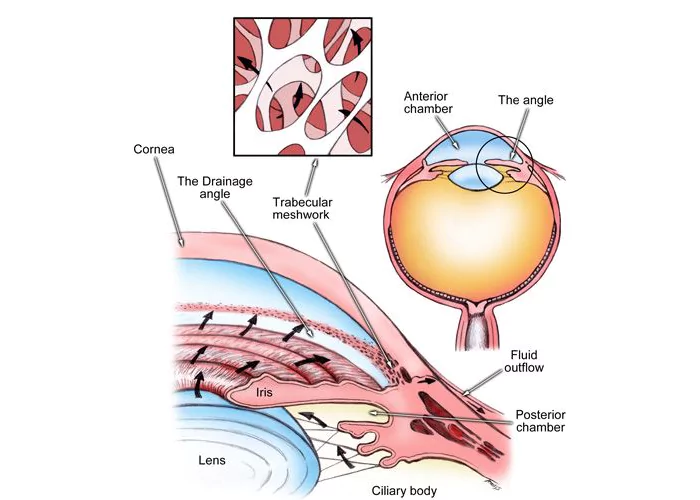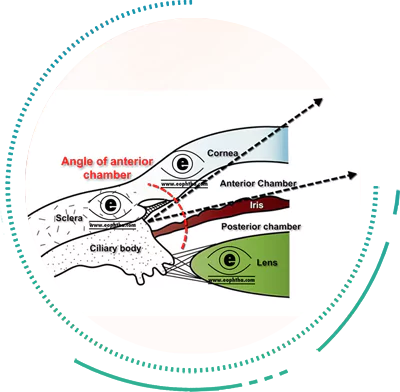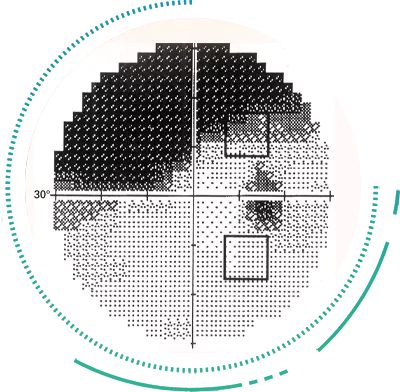Angle Closure Glaucoma or Narrow Angle Glaucoma
In this type of glaucoma, although the trabecular meshwork is functioning well, the angle between the iris and cornea is extremely narrow. This blocks the drainage of the aqueous humor from the eyes thereby increasing the IOP. In mild cases, IOP is elevated only when the pupil dilates, e.g at night or in dim light.
However as the narrowness of the angles increase, the rise in pressure can be constant and at times, can precipitate a sudden increase in IOP. This sudden increase in IOP is known as an Acute Angle Closure Attack, and is a medical emergency which needs urgent Glaucoma Treatment.

Diagnosis
Gonioscopy
The first step in Glaucoma Treatment for this type of Glaucoma is performing a Gonioscopy. Your Eye Doctor may perform this test to evaluate the extent of the blockage due to the narrowing of the angles. The test is usually performed in the OPD under drop Anaesthesia.


Perimetry
The visual field analysis by Perimetry gives an objective assessment of the optic nerve damage so far and would help monitor the effectiveness of any further Glaucoma Treatment Modality.
Optical Coherence Tomography [OCT]
The OCT test objectively assesses the thickness of the retinal nerve fibre layer which is affected in patients with this disease. This test is also done periodically to monitor the progress and the effectiveness of the Glaucoma Treatment.
Treatment
The treatment of Angle Closure Glaucoma involves methods to reduce the blockage caused due to the narrow angle. As many patients of Narrow Angle Glaucoma also have a component of Open Angle Glaucoma, a combination of treatment modalities may be employed by your Eye Specialist. Only using an eye drop for glaucoma may not be effective in patients with narrow angle, since the aim of the Glaucoma Treatment is to prevent the sudden spikes in the IOP which can further damage the optic nerve. Also Glaucoma Surgery such as a Trabeculectomy may not be employed as the first line management in these cases.
Laser Prophylactic Iridotomy [Laser PI]
It is the most commonly performed Glaucoma Laser Surgery. In this Glaucoma Treatment, a very precise Laser beam is used to create a small opening in the periphery of the iris diaphragm. This causes the aqueous humour to flow directly to the angles of the eye without having to cross the pupil.
Laser PI is done as an OPD procedure under drop [topical] Anaesthesia. This Glaucoma Laser Surgery is a safe and effective method to reduce the IOP in patients having narrow angles. The earlier it is done, the better the chances of preventing extensive damage to the optic nerve and less acute is the need of subsequent Glaucoma Treatment.
Early Cataract Extraction With IOL Implantation
In elderly patients who have Cataracts along with Narrow Angle Glaucoma, removal of the cataract via a simple surgical procedure can itself reduce the IOP in the eyes. This acts partly like a Glaucoma Surgery by increasing the space in the eyes.
The advantage of this is that it is a permanent procedure and the patient would not need to undergo an additional Glaucoma Laser Surgery at a later date.

